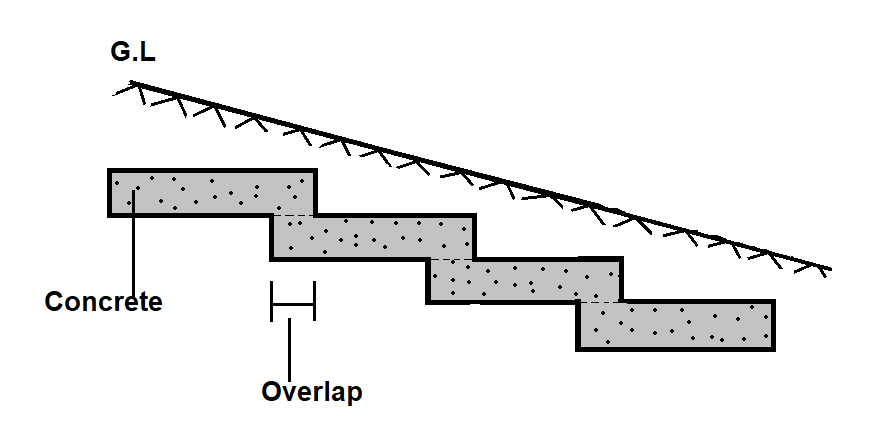Foundation on Sloping Ground
If the structure is to be constructed on sloping land, it will be expensive to build the structure at the same level. Because, the amount of earth requirement is very high, which becomes most of the time impossible due to lack of earth or more excavation cost and for high construction expenditure. The work can be economized by providing a stepped foundation.

In case of a stepped foundation, at first, the foundation trench is excavated in steps. The depth of each excavated step should not be more than the thickness of the concrete bed block which is to be provided under the foundation. Deth of each step should be multiple of even number of masonry courses.
The overlap between two layers of the foundation concrete should be equal to the thickness of the concrete bed or twice the depth of the step, whichever is greater.
A minimum foundation depth of about 80 cm should be provided at all points, this is essential from the point of view of protecting the foundation from weathering effects.
If the foundation is situated in soil or in rocks, the depth of the foundation should not be less than 1 m and 0.6 m respectively.
Read More: